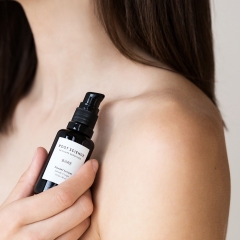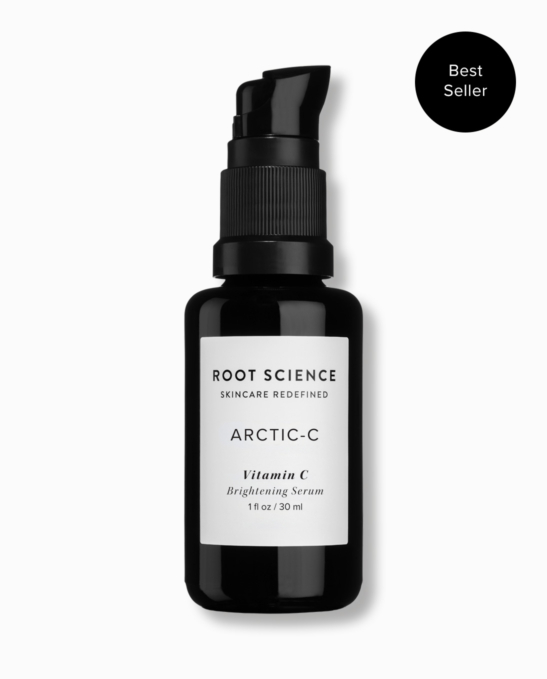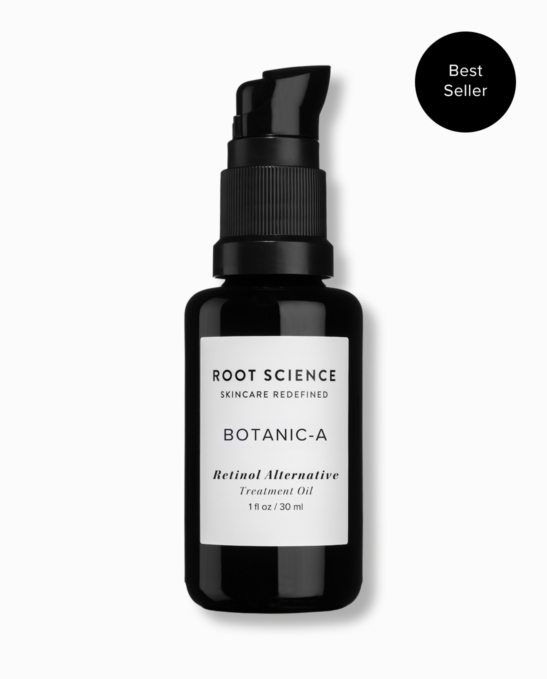We all have a memory vault of regrets. For many of us, there’s at least one that involves an incident that didn’t turn out so well for our complexion, leaving us with damaged skin. Sun damage, acne scars and irritation from harsh treatments are some of the most common forms of skin damage. Regardless of how the skin damage is caused, there are simple ways to support your skin’s own repair process and restore healthy, glowing skin in the comfort of your own home.
In this guide, you’ll learn how to repair the appearance of damaged skin naturally and why expensive procedures might not be the only solution to your skin woes.
What Causes A Damaged Skin Barrier?
There are numerous reasons why skin damage occurs. Some damage is a result of our own doing and some is out of our control. However, the most common causes for skin damage includes sun damage, harsh skincare treatments, scars from picking blemishes and clogged pores. Environmental factors such as heat, lack of humidity, wind, spending too much time in ocean water or chlorine pool water can also have a negative effect on skin.
Physical Signs Of A Damaged Skin Barrier Include:
– Dry skin, flaky skin and uneven skin texture
– Red, itchy, blotchy and tight feeling skin
– Hyperpigmentation, dark spots/sun spots/age spots, uneven skin tone
– Skin imbalance such as excess oil production
– Deep wrinkles, fine lines, dull skin
– Acne scars, damaged pores, enlarged pores

How To Repair Damaged Skin Naturally: 5 Simple Steps
Nature provides us with numerous ingredients that support skin repair and help us take control of a damaged barrier in the comfort of our home. When skin is damaged, what we apply to it topically and feed our body internally can play a vital role in determining how quickly and effectively we repair and restore the skin barrier.
1. Apply Pure Aloe Vera Gel
Aloe vera has been used throughout history to assist with skin repair. Typically, we think of aloe vera whenever we’ve spent too much time in the sun, however it’s also a great option for acne-related skin damage. As easy and tempting it is to purchase aloe vera gel from the store, we recommend purchasing a live aloe plant to fully benefit from the skin reparative benefits of this miraculous plant. Cut off a small piece of an outermost leaf, then cut the piece in half and scrape out the fresh gel from the inside. It’s important to note that the exterior part of the aloe should not be applied to skin. Learn how to extract aloe vera gel from a plant here. Apply to damaged skin daily in the evening, when skin goes into repair mode, before you apply your oil-based serum or moisturizer.
2. Use Skincare Products With Antioxidants
If you want to take an active role in reducing the appearance of damaged skin, you’ll want to load up on nutrients, inside and out. We’ve all heard about the benefits of eating antioxidant-rich foods. Well it just so happens that applying antioxidants to our skin has major benefits. Skin-loving antioxidants such as vitamin C and vitamin E are highly recommended and well studied for their benefits. Vitamin C is great for gently brightening the appearance of skin, helping to minimize the appearance of dark spots, and uneven skin tone. Look for sensitive skin friendly, stable forms of Vitamin C such as tetrahexydecyl ascorbate. Vitamin E is great for dry skin and damage related to post-acne scars. We also recommend rosehip oil as it’s a natural source of skin loving pro-vitamin A and bakuchiol for its retinol-like results.
3. Upgrade Your Daily Moisturizer To A Facial Oil
When it comes to supporting your skin, your daily moisturizer should be a workhorse, delivering more than just basic moisture. Organic botanical oils helps to restore moisture levels, creating the ideal environment for your skin to thrive, while also being a source for topical nutrients, fatty-acids and skin supportive properties. Our favorite botanical oils for skin include; Tamanu Oil, Sea Buckthorn, Calendula and biocompatible Jojoba.

Skincare Powered By Science + Nature
Treat Your Skin To An Antioxidant-Rich Facial Oil
4. Keep Damaged Skin Out Of Harms Way By Avoiding Inconspicuous Dermal Irritants
It’s important to stay out of direct sunlight when trying to repair damaged skin. If your skin is in such a state that it doesn’t allow for topical application of SPF, we recommending wearing a hat and clothing that protects your skin from sun exposure. We highly recommend avoiding products that contain fragrance of any kind. This includes natural fragrance from essential oils. We also recommend using laundry detergent without fragrance as it’s a common skin irritant. Since your skin touches your sheets and clothes around the clock, it’s best to avoid it. Do not exfoliate peeling or tender skin. Lastly, avoid synthetic foaming agents and drying facial cleansers. Instead we recommend using a gentle oil-cleanser or simply use raw honey as a face wash.
5. Support Damaged Skin Internally By Increasing Your Consumption Of Antioxidant & Nutrient-Rich Foods
When looking into treatments that can help repair damaged skin, think of food as your internal support system. It’s vital that all of your external efforts to repair damaged skin are matched internally through your diet. To help your skin with its own repair process, make sure you are consuming organic, nutrient-rich foods. Avoid processed foods and refined sugar. Drink filtered water throughout the day to keep skin hydrated. Make sure each meal consists of a colorful plate, full of antioxidant-rich leafy-greens, healthy fats and a quality-source of protein. Look into the basic principles of an anti-inflammatory diet. This will help you choose the right foods and eat your way to healthy skin.
The Bottom Line
We understand how frustrating skin damage can be. Panic and frustration can lead to rash decisions. So before going to extreme measures or investing in expensive cosmetic procedures, take a deep breath. Create an at-home skincare plan to support the repair process. Give your skin a little extra love by caring for it with the very best from nature. And remember, be patient. All good things take time. As much as we want that overnight transformation, skin needs time. Trust the process.
Shop Featured Products
Disclaimer: This content is for informational and educational purposes only. It is not intended to provide medical advice or to take the place of such advice or treatment from a personal physician. All readers/viewers of this content are advised to consult their doctors or qualified health professionals regarding specific health questions. Neither Root Science nor the publisher of this content takes responsibility for possible health consequences of any person or persons reading or following the information in this educational content. All viewers of this content, especially those taking prescription or over-the-counter medications, should consult their physicians before beginning any skincare, nutrition, supplement or lifestyle program. The views and products expressed are not intended to treat, cure or prevent any disease.
Image Sources: Rock Formation via Retha Ferguson / Yellow Flowers via Retha Ferguson



